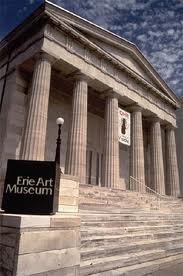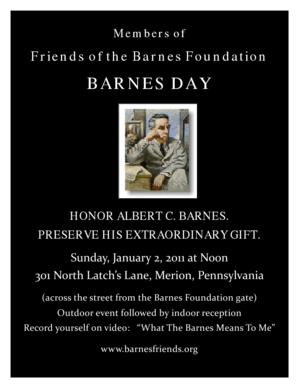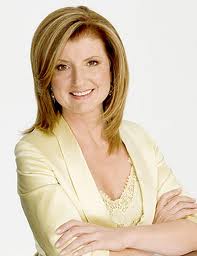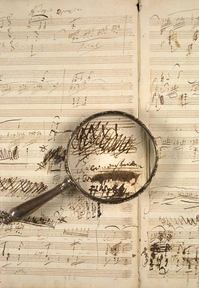Regular readers of Real Clear Arts know that I like to shine a light on small museums from time to time. In that vein, today I was struck by an article in the Erie Times-News. Here’s how it began:
Twenty-ten will certainly be best remembered as the year Erie got the art museum building it deserves [at left]….The Erie Art Museum has been the aesthetic equivalent to a lighthouse on the lake for more than a century, a provider of guidance and illumination for the entire region. But for most of that history the museum made do with facilities that were historic and elegant in their own right [below], but not always adequate for the acquisition, presentation and preservation of our local artistic heritage….
In October, the museum unveiled its $9 million expansion and renovation project, one…which has added more than 10,000 square feet of exhibition, administrative and storage space to the existing facility. If you haven’t yet been, you must go, not only to wonder at the very cosmopolitan and dynamic design of the building itself, but also at the variety of exhibits the museum now has the capacity to present.
 Even from the website, I think I get it — starting with that reference to folk art. It was’t just the folk art exhibit, which surveyed the work of 30 Pennsylvania artists, that is interesting. The EAM is also “a regional folk art support center,” whose web page links to regional folk artists and has a program called Old Songs, New Opportunities, which takes visual culture and music into day care centers.
Even from the website, I think I get it — starting with that reference to folk art. It was’t just the folk art exhibit, which surveyed the work of 30 Pennsylvania artists, that is interesting. The EAM is also “a regional folk art support center,” whose web page links to regional folk artists and has a program called Old Songs, New Opportunities, which takes visual culture and music into day care centers. 

 I’m not an electronic game player, but games are everywhere in our society…more people play, statistics show, than some of us would guess…so I was, well, game.
I’m not an electronic game player, but games are everywhere in our society…more people play, statistics show, than some of us would guess…so I was, well, game. For one, although she is clearly a person interested in the arts, someone who once wrote a book about Picasso, it never occurred to me that she thought much about museums. Or, as she revealed, that she would be invited to speak to a group of “museum presidents and directors” at the Los Angeles County Museum of Art. But she is certainly a successful entrepreneur, and she was out in front of other media groups on new media. So there you are.
For one, although she is clearly a person interested in the arts, someone who once wrote a book about Picasso, it never occurred to me that she thought much about museums. Or, as she revealed, that she would be invited to speak to a group of “museum presidents and directors” at the Los Angeles County Museum of Art. But she is certainly a successful entrepreneur, and she was out in front of other media groups on new media. So there you are. Last week, the Morgan Library and Museum* inaugurated its
Last week, the Morgan Library and Museum* inaugurated its